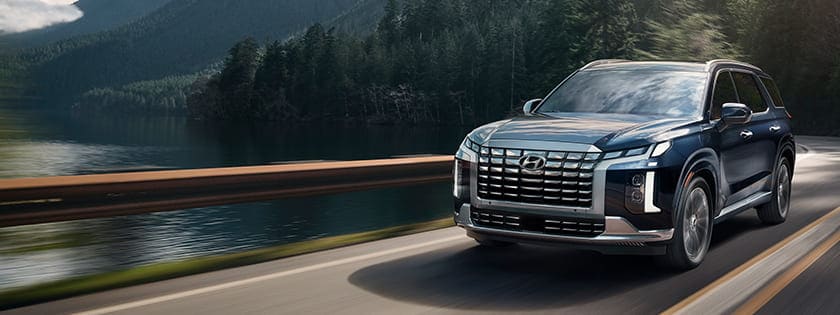How Much Car Can I Afford? Edmunds Car Affordability Calculator
How much car can you afford? Find out with Edmunds Auto Affordability Calculator.
About Affordability Calculator
These estimates are based on standard industry data, but the values that apply to your purchase may vary. If applicable, please use the information provided to you by your dealer or lender, or use an estimate based on your credit profile and circumstances.
Your target monthly payment includes the estimated sales tax, title and registration fees that would be added to your total loan. The estimated vehicle price range does not include optional items like an extended service plan. Since many cars can be purchased at a discount from the MSRP or list price, we provide a price range.
Your Estimated Price Range is our estimate of the vehicle price (i.e., MSRP or list price) of the car you can afford based on the information you provided or confirmed in the calculator. In calculating this, we take into account that you will also need to pay estimated sales tax, title and registration costs.
How Much Car Can I Afford?
By Brett T. Evans, Correspondent
July 29, 2025
As if car shopping weren't challenging enough already, figuring out how much to spend on a car is a moving target even among financial experts. Some believe that, all combined, automotive expenses, including gas, insurance, car payments and maintenance, should not exceed 20% of your pretax monthly income. Other experts say that a vehicle that costs less than half of your annual take-home pay may be affordable. Then some frugal personal finance gurus say you should spend no more than 10%-15% of your annual income on a vehicle purchase. Pretax, take-home, annual income — these terms are enough to make a person ask: "How much car can I afford?"
Since every financial situation is different, there's no perfect formula for how much you can afford; that said, our short answer is that your new car payment should be no more than 15% of your monthly take-home pay, meaning what you keep after taxes and insurance. If you're leasing or buying used, that payment should be no more than 10%. The reason for finding a vehicle that falls below 10%-15% is that the payment isn't the totality of what you will be spending. You'll need to factor in the costs of fuel, insurance and, in the case of used cars, maintenance, which many people overlook. We put those costs at another 7% of your take-home pay. So, all in, you're looking at a total budget that is no more than 20% of your monthly take-home pay in an ideal circumstance.
While the 10%-15% rule for a car payment may not work for everyone, it's a good starting point for finding a target price that won't leave you scrambling to pay your bills every month. Here's how you can get a more customized number for yourself.
Jump to:
- Calculate your automotive budget
- Determine your fuel and insurance costs
- Examine your buying patterns
- An average new-car buyer's scenario
- The used car option
- The lease option
- What's the best option?
- FAQs
1. Calculate your automotive budget
Take a few minutes to run down what you spend every month. From your monthly take-home pay, deduct rent or mortgage, bills, groceries, child expenses, savings, and spending on entertainment. You will then discover how much money you have left over and how much car you can afford.
Now you can choose a car that'll fit within that budget, maybe even with some extra cash savings. Take a look at the Edmunds affordability calculator, which lists vehicles that fall into the price range you've predetermined. Keep in mind that the prices on the calculator results page will change based on the trim level, options, sales tax and registration fees, etc.
If your preselected budget doesn't include many options, you're not alone. New vehicles have become more expensive, and many consumers are feeling the pinch. In any case, this amount now represents your automotive budget, which, as we've noted, is more than just the monthly payment. Now, let's estimate fuel costs and insurance fees.
2. Determine your fuel and insurance costs
Before you set out to buy or lease, find out what your fuel expenses will be. A good way to estimate is to track your mileage and fuel economy in your current car and compare it to the estimated mpg ratings so you can take an educated guess at the numbers you'll get in a new car. You'll also need to figure out how much you'll be spending on insurance, remembering that it might be more expensive for a newer vehicle, especially if you have some dings in your driving history. Even though it takes a little work to come up with these estimates, you shouldn't overlook them because they can help you choose among multiple vehicles. Some may cost more to fuel up; others might be more expensive to insure.
The EPA's Fueleconomy.gov website has a detailed listing of fuel economy figures and annual fuel cost estimates for both new and used vehicles. You can compare these against your current car for budgeting reasons.
For insurance quotes, contact your agent or insurance company about the vehicle you're interested in. You should be able to get an accurate estimate. Or go to the auto insurance website of your choice, and there should be an option to get an online quote. Do insurance and fuel costs add up to 7% or less of your monthly paycheck? Then you're OK.
3. Examine your buying patterns
Following a formula is great in theory, but recognizing your own purchasing habits, both good and bad, can help you clue into the ideal shopping strategy.
For example, do you purchase a car, pay off the loan on time, and keep your new ride for a few years? Buying a new car would work for you since you have a track record of shopping within your means, finishing off the loan, and going payment-free for a while. That's smart.
Do you get bored with a car after a few years, or enjoy chasing the latest and greatest technology and performance? Leasing is a good fit for you. It allows you to avoid the steep depreciation hit that brand-new cars face in their first few years on the road, and the monthly payment is typically lower than buying, so you can get a nicer car for less money. The downside is you'll never truly own the vehicle, and all of that money spent on the lease payment is gone forever.
Finally, are you a blend of frugal and realistic when it comes to spending money? You might be happiest in a lightly used or certified preowned car that you can buy with cash or pay off early, then keep for several years. The first owner takes the depreciation hit, and you'll have a car that's new enough to avoid major repairs for a while.
An average new-car buyer's scenario
To make this budgeting less abstract, let's plug in some real-world numbers. According to the U.S. Bureau of Labor and Statistics, the median weekly earnings of a full-time worker in the U.S. were $1,194 in the first quarter of 2025, which translates to an annual income of $62,088.
Paying an estimated 20% in income taxes would translate to a monthly income of about $4,139 for a buyer we'll call John. If we follow our 15% rule, John could handle a monthly car payment of up to $621.
In May 2025, the average amount financed for a new vehicle was $42,884, according to Edmunds data. Let's say John bought a new Kia Telluride for that amount. We'll assume he has solid credit and that all aspects of the deal mirror the industry average, including the interest rate of 7.3%. John made an 11% down payment, which comes out to about $4,717. The monthly payment will be $716 because John has opted for the most common loan term of 72 months.
He's already over budget and hasn't yet factored in fuel and insurance costs.
If John drives around 13,500 miles a year, his fuel cost pencils out to $180 a month, while the average American pays $170 a month for auto insurance. In total, John's monthly automotive expenses are actually $1,066, more than 25% of his monthly take-home pay.
Some people might be OK with spending a quarter of their take-home pay on car ownership, but in John's case, it will put real stress on his financial situation. And what if you make less than John does? What if you have poor credit? Or what if you have other debt you're trying to pay down? It would make new car buying a real challenge. The options now are to lease, find a less expensive vehicle, or consider a used car.
The used car option
What would the payment look like if John were to buy used? For starters, because the selling price would be lower than on a new vehicle, there would be a lower threshold of credit needed for financing the auto loan. Assuming again that John goes with the averages, the amount financed for the used vehicle John chose would be $29,114, the average price shoppers financed on used cars in May 2025. The down payment would be about 10% ($2,911). The monthly payment would be about $509, and it would take about 72 months to pay it off. The used car loan would have an interest rate of roughly 11%, which is about average for used car lending.
Fuel costs would be about the same. Insurance would be slightly less because the car is used. The insurance savings, however, would likely be offset by the added maintenance that comes with an older vehicle. Let's call it a wash and assume the same estimate as for a new car: about $350 combined, or 8% of take-home pay for insurance and fuel.
By buying a used vehicle, John would be spending $859 a month, or about 21% of his monthly take-home pay. On its face, this purchase would seem to be the most cost-effective since John is taking out a smaller loan.
But it would take six years to pay off the loan amount, at which point the car would be 8 or 9 years old. How much longer will John want to drive it? It's something to keep in mind when choosing a long loan term because the whole point of financing is to be free of a car payment eventually. And if John buys another SUV as soon as the old one is paid off, John might as well be leasing, so let's look at that.
The lease option
A three-year lease in 2025 had a monthly payment of $604, but keep in mind that this average tends to skew high because many leased cars are luxury models (think BMW, Mercedes-Benz and the like). Since John is not looking for a luxury vehicle, he should be able to find a midsize SUV for about $450 a month and about $2,500 down. One major difference, however, is that John would have to limit driving to about 12,000 miles per year, which is a common mileage limit for advertised lease specials. Adding more miles would cost an extra $25 per month by our estimates.
John's lease payment would be an easier-to-afford $475 per month, or 11.5% of his take-home pay. When we factor in 8% of take-home pay for fuel and insurance costs, John would be spending about $825 per month on this car, which would be about 20% of his monthly income. That's right at our recommended 20% for all auto expenses.
In this scenario, John would pay much less per month to lease than to buy. Because of the smaller down payment, John would also have a little more in the bank. On the other hand, John would be limited in the number of miles he can drive (without penalty) and would have to start the process over in three years when the lease is up, with nothing to show for it besides some added credit history for making his payments on time.
What's the best option?
There's a case to be made for each approach to shopping for a new car. You just have to be realistic about your budget, buying history and preferences. And if you do commit to a long-term loan, be sure to drive the vehicle for at least a few years after it's paid off.
In the end, the best scenario is one that takes all of your other financial responsibilities into account — maybe you're saving for a child's college education or putting more money into your retirement account. In any case, it's never wise to shop for cars at the top of your budget. If it's a stretch now, consider saving up a bit more and revisiting the new-car plan later. And remember, there's more to owning a new car than that monthly lease or finance payment.



